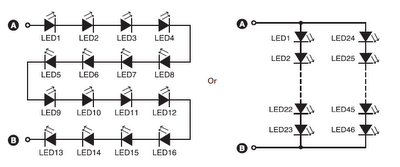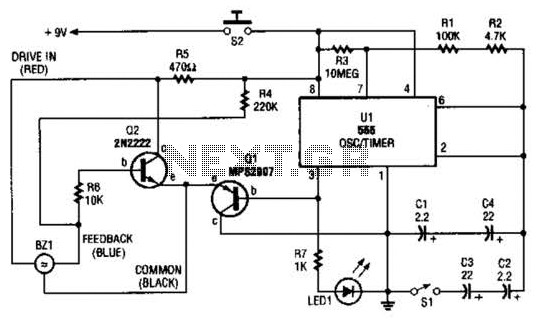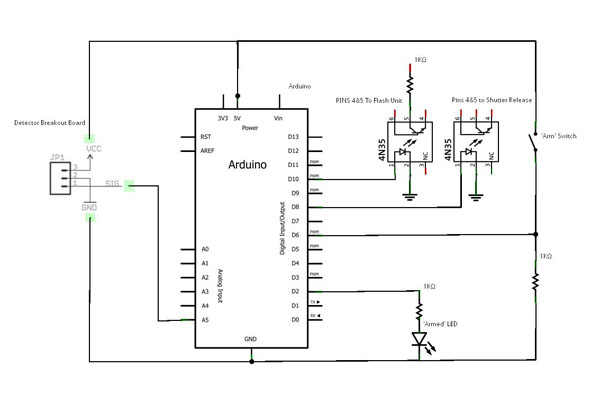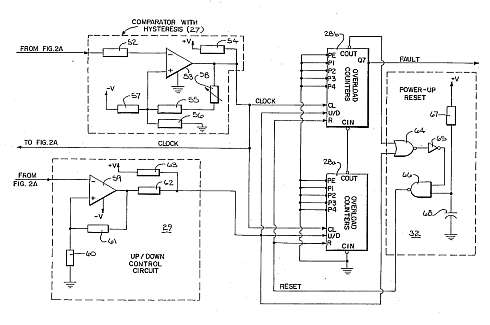
Joule Thief Circuit board

Battery vampires are circuits designed to extract as much energy as possible from batteries or cells. They are not regulated drivers; rather, they are boost circuits that create a higher output voltage from a low input voltage and provide current that is proportional to the input voltage, which correlates with the remaining energy in a battery or cell. Custom Joule Thief circuits can be designed using discrete components. The size of the inductor determines the current for a specific input voltage, with values typically noted for an input voltage of 1.5 volts. Common inductor values used are 4.7 µH or 5.6 µH.
Battery vampires, often referred to as Joule Thieves, are simple yet effective circuits aimed at maximizing the utilization of energy stored in batteries, particularly when the voltage has dropped below the operational threshold of conventional devices. These circuits operate by boosting the low voltage from depleted batteries to a higher voltage, allowing for the continued operation of electronic devices until the battery is fully discharged.
The fundamental operation of a Joule Thief involves an inductor, a transistor, and a few passive components such as resistors and capacitors. The inductor is critical as it stores energy when current flows through it and releases this energy in a higher voltage form when the current is interrupted. The choice of inductor value is significant; typically, values such as 4.7 µH or 5.6 µH are employed, as these provide a suitable balance between energy storage and switching frequency.
The circuit operates in a self-oscillating mode. When the transistor is turned on, current flows through the inductor, causing it to store energy. Once the transistor reaches saturation, it turns off, and the energy stored in the inductor induces a higher voltage across the output. The output voltage can be significantly higher than the input voltage, making it feasible to power devices that require higher operational voltages.
Designers can create their own variations of the Joule Thief circuit by adjusting component values to optimize performance for specific applications. For instance, changing the resistor values can affect the base current of the transistor, thereby influencing the frequency of oscillation and the efficiency of energy transfer. Additionally, the choice of transistor can impact the overall efficiency and output voltage stability.
In summary, battery vampires are a practical solution for extending the life of batteries by efficiently converting low voltage to higher voltage levels, making them valuable in applications where battery life is critical. The simplicity of the design allows for easy customization and implementation, making it accessible for hobbyists and engineers alike.Battery Vampires are circuits designed to suck as much energy as possible out of batteries/cells. They are not regulated drivers they are a boost circuit create a higher voltage on the output from a low input voltage and provide current proportional to the input voltage, which is in turn proportional to how much energy is left in a battery/cell. You can make/design your own Joule Thief circuits from discrete components. As you can see in this image, the size of the inductor sets the current for a given Vin (those are listed for a Vin1.5volts).
I am using 4.7uH or 5.6uH. 🔗 External reference
Battery vampires, often referred to as Joule Thieves, are simple yet effective circuits aimed at maximizing the utilization of energy stored in batteries, particularly when the voltage has dropped below the operational threshold of conventional devices. These circuits operate by boosting the low voltage from depleted batteries to a higher voltage, allowing for the continued operation of electronic devices until the battery is fully discharged.
The fundamental operation of a Joule Thief involves an inductor, a transistor, and a few passive components such as resistors and capacitors. The inductor is critical as it stores energy when current flows through it and releases this energy in a higher voltage form when the current is interrupted. The choice of inductor value is significant; typically, values such as 4.7 µH or 5.6 µH are employed, as these provide a suitable balance between energy storage and switching frequency.
The circuit operates in a self-oscillating mode. When the transistor is turned on, current flows through the inductor, causing it to store energy. Once the transistor reaches saturation, it turns off, and the energy stored in the inductor induces a higher voltage across the output. The output voltage can be significantly higher than the input voltage, making it feasible to power devices that require higher operational voltages.
Designers can create their own variations of the Joule Thief circuit by adjusting component values to optimize performance for specific applications. For instance, changing the resistor values can affect the base current of the transistor, thereby influencing the frequency of oscillation and the efficiency of energy transfer. Additionally, the choice of transistor can impact the overall efficiency and output voltage stability.
In summary, battery vampires are a practical solution for extending the life of batteries by efficiently converting low voltage to higher voltage levels, making them valuable in applications where battery life is critical. The simplicity of the design allows for easy customization and implementation, making it accessible for hobbyists and engineers alike.Battery Vampires are circuits designed to suck as much energy as possible out of batteries/cells. They are not regulated drivers they are a boost circuit create a higher voltage on the output from a low input voltage and provide current proportional to the input voltage, which is in turn proportional to how much energy is left in a battery/cell. You can make/design your own Joule Thief circuits from discrete components. As you can see in this image, the size of the inductor sets the current for a given Vin (those are listed for a Vin1.5volts).
I am using 4.7uH or 5.6uH. 🔗 External reference





